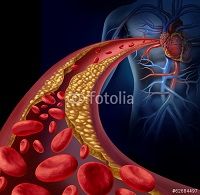Article
Lipids: Sometimes Ignored as Player in Cardiovascular Disease
Author(s):
Advanced lipid testing can be useful in predicting cardiac risk, but tests are often underutilized.

Physicians trying to improve patient outcomes in cardiovascular disease have many tools. One they may be overlooking is advance lipid testing, said Peter Jones, MD, associate professor at the Methodist DeBakey Heart and Vascular Center at Baylor College of Medicine in Houston, TX
.Speaking at the 19th Annual Conference on Hypertension, Diabetes and Dyslipidemia in Charleston, SC, Jones said “There is value in advanced lipid testing.”
“Vascular disease is very complex and lipids are part of it,” he noted.
Yet according to one respected set of guidelines, those put out by the American College of Cardiology/American Heart Association, “It’s a zero to them—and that’s ridiculous,” he said.
The most useful way to use lipid test results, however, is not in particle size, but in particle numbers.
“Low LDL particle number is the best predictor of survival,” in these patients, he said.
Another useful test is assessing Lp(a), which Jones said is inherited and directly relates to coronary risk. “Even with a statin the risk is still higher,” he said. “It can case premature heart damage.”
Coronary arterial calcium measurements are also good predictors of risk. “But it depends where it is,” Jones said. “In multiple vessels the risk is highest,” but if the CAC score is over 300, “that’s very predictive.”
Conversely, when making treatment decisions using guidelines driven by factors like age, “if there is zero CAC, you have a very low risk” regardless of how old the patient is.
“This patient would probably die of cancer long before heart disease,” he said.
The test costs only $75, an important factor for physicians treating patients with limited coverage—particularly if a low CAC score shows the patient does not need pharmaceutical management of heart-disease risk.
But a higher score shows treatment is needed. “No one regresses from CAC,” he said, “It only progresses, you can’t get it out of the arterial walls.”
Discussing other aspects of testing, Jones urged physicians to be wary of patients who come in to the office bearing results of carotid imaging tests, saying they could be done in ways that give inaccurate results and be meaningless.
But he urged leniency when it comes to the results of cholesterol tests that are supposed to be done after fasting. Patients’ real-world cholesterol levels are actually just as important after they have eaten, he said. Telling patients to come back and getting these tests only after they have not eaten for 8 hours can be counter-productive. Doctors might not see them again, “So non-fasting test results can actually help you.”




